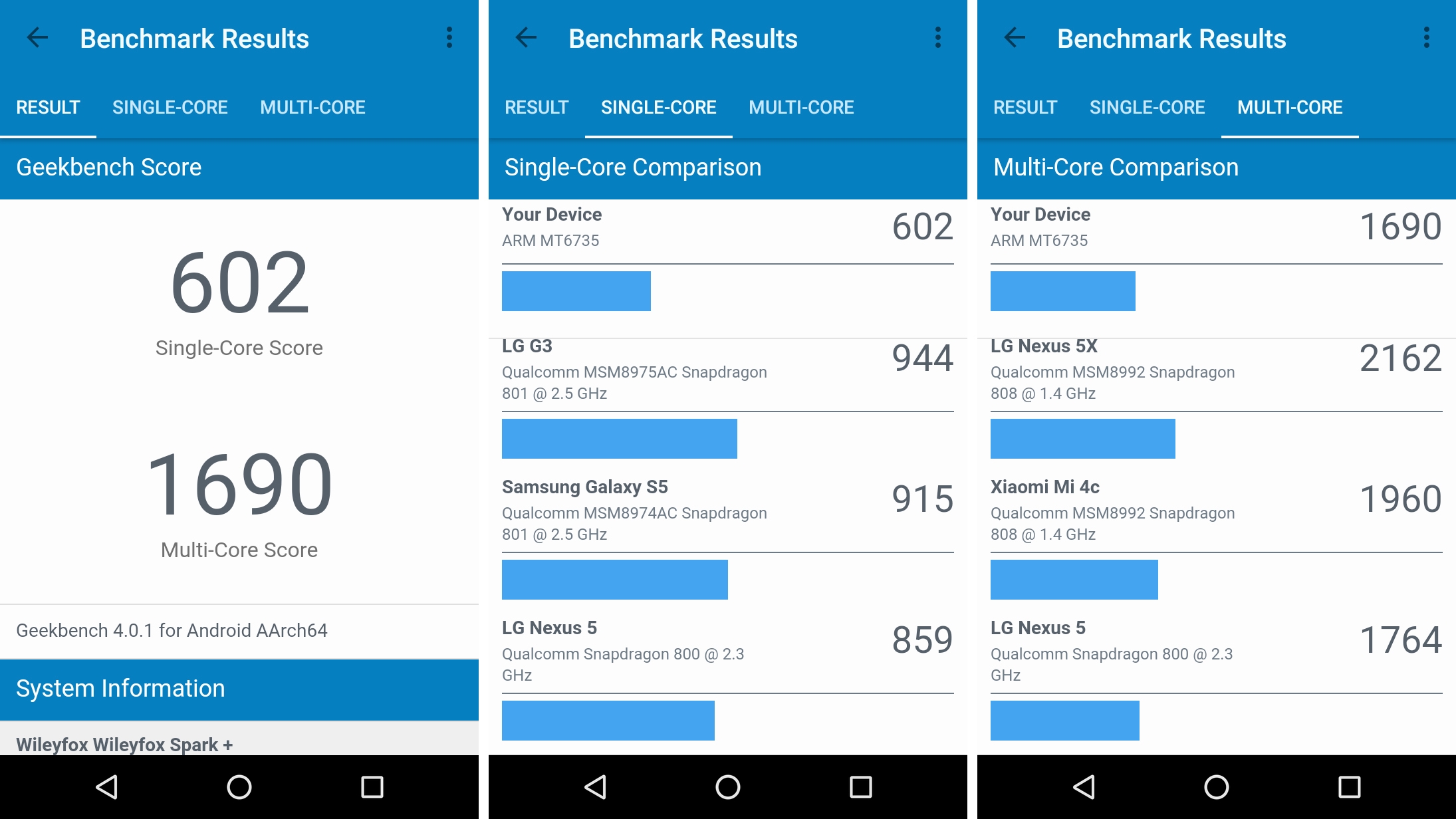Why you can trust TechRadar
Interface and reliability
- Smooth general performance
- Not completely bug-free
Having just a 720p screen actually gives the Spark Plus an advantage in one way, as with fewer pixels to push, the MediaTek 6735 SoC (a couple of years old now, and manufactured on a 28nm process) mostly flies.
Backed up with 2GB of RAM and the relatively lightweight (and reasonably well-optimised) CyanogenMod software, general performance is pretty smooth. Navigating through various menus and other parts of the interface feels snappy, and it's well laid out too.
The device is capable of keeping several apps in memory at once, although some more memory intensive options (such as games) will force app closures in the background.
MediaTek has come a long way from several years ago, whereas once its chips were poor bargain-basement fodder, now they have really begun to catch up with Qualcomm in terms of power and performance. However, this comes with a caveat: updates.

If you are the kind of person who wishes to see their device updated continuously throughout its lifecycle, then this may be a handset to avoid. MediaTek is not known for adapting its chips to the latest Android versions, and there is no word yet on whether the Spark Plus will ever be upgraded to Android 7.0 Nougat.
The potential lack of updates also means bugs could take a long time to be fixed, and this isn’t a bug-free device. Our review unit suffered from an annoying one that would force it into a reboot-loop until it ran out of power.
Regardless, the 16GB of in-built storage is welcome, and is far better than the 8GB included in the standard Wileyfox Spark (though far from the 64GB of the reasonably affordable Bush Spira E3X).
There’s also a microSD card slot, which allows for up to 32GB of extra memory, and included cards can be formatted as internal storage, should you so wish.
Benchmarks and performance
- Reasonable benchmark performance for the price
- Iffy call quality
In the CPU-intensive Geekbench 4 benchmarking app, the Wileyfox Spark Plus achieved some predictable results, scoring 602 in the single-core test and 1690 in the multi-core.
The BQ Aquaris M4.5 for comparison, which runs the same chipset but with a weaker screen and less RAM, scored over 200 points less in both instances.

Indeed, this is a much faster phone in general than the Aquaris, providing an overall feel of polish that even more expensive phones often lack.
Wi-Fi and 4G speeds were also generally decent, although we found call reception to be particularly poor in low-signal areas.
Movies, music and gaming
- Weak speaker
- Can run basic games, but struggles with high-end ones
A phone with a 5-inch screen is in something of an odd position for media consumption. Not quite a phablet, yet far from compact, it is neither here nor there.
At 720p, the Wileyfox Spark Plus doesn't have the most pixel dense screen, nor does it have the best speakers or a powerhouse chipset, but for the most part it’s OK.
Audio reproduction is perhaps its weakest area. The single rear-facing speaker is in a poor position (audio should ideally never be blasting away from your face), and it fails to pump out sound to acceptable levels.
The trebles are tinny, and the bass is non-existent, and unfortunately this carries over to the headphone performance. The in-built audio chip is anaemic at best, audiophiles would be best to look elsewhere.

As for video playback, with its small battery and screen the Spark Plus isn’t great for movie marathons. For the odd YouTube video, it’s adequate, but for those looking for the best performance in this price range, there are definitely better options.
Games, for the most part, run well on the phone. Although it struggles with more intensive titles such as Dead Trigger 2 and Asphalt 8, it runs the likes of Crossy Road with ease. This isn't quite an A10 Fusion-sporting iPhone 7, but it gets the job done.
Current page: What's it like to use?
Prev Page Introduction, key features and design Next Page Battery life and cameraSean is a Scottish technology journalist who's written for the likes of T3, Trusted Reviews, TechAdvisor and Expert Reviews.
